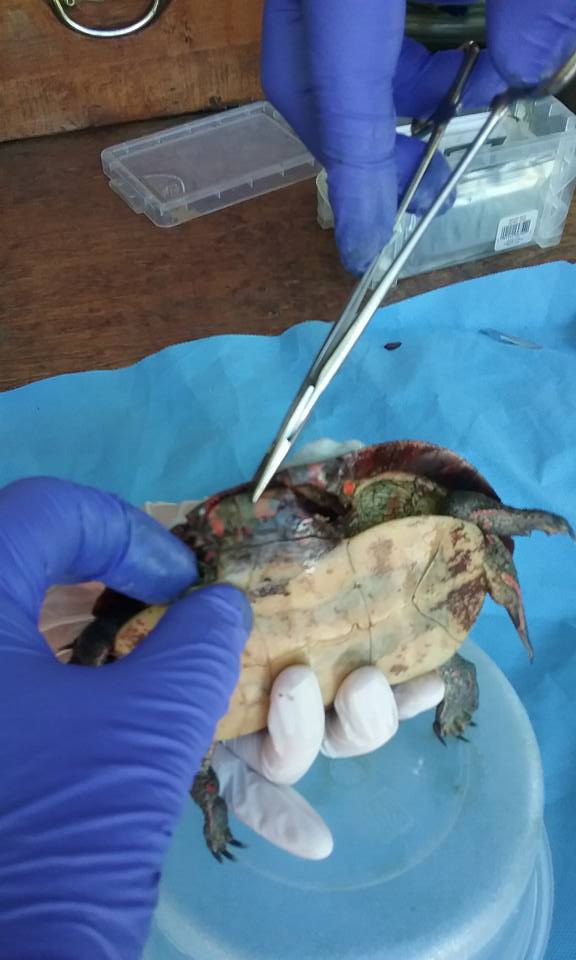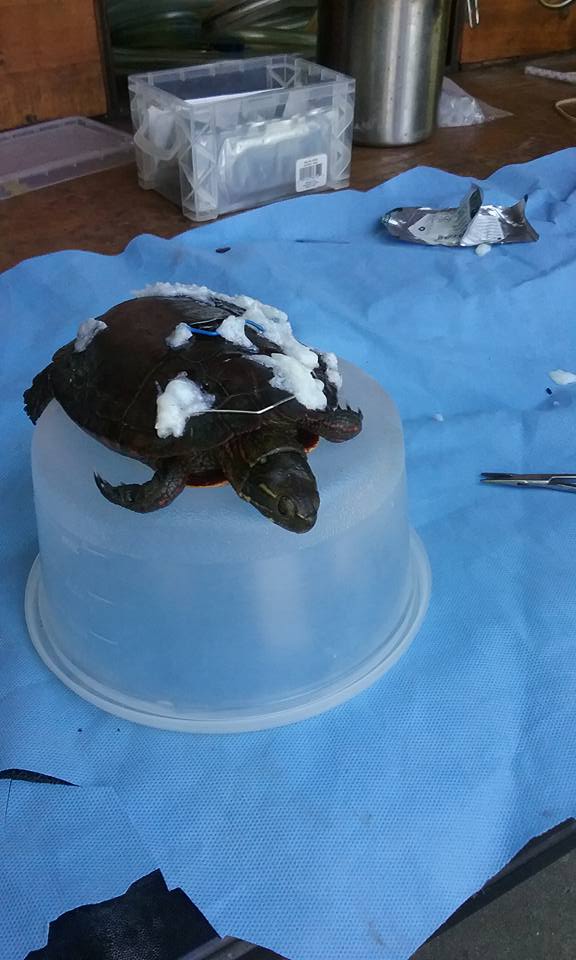Seeing a turtle out in the wild or even in your backyard is an exciting event. Turtles are easy to observe due to their slow-moving nature. They also tend to hang out in areas where people are also hanging out.
In the Eastern USA, we have three local turtle species that are often seen in yards, on roads, and when we are hiking or fishing. They are the Eastern Box Turtle, Red-Eared Slider, and Common Snapping Turtle. Removing any of them from their territory can cause confusion and even death.
Carry Your Home With You
Turtles are unique and wonderful creatures. Their home and their bodies are one and the same. So everywhere the turtle goes – so goes their home.
The turtle shell is a unique structure. The shell is divided into two parts. The top is called the carapace. The carapace combines the ribs, spine, and about fifty bones.
The bottom is called the plastron. It includes the lower parts of the ribs and the clavicle bones The plastron is hinged.
This is what allows the turtle to pull themselves into their shell and close it up. This protects them from predators. Young turtles cannot close their plastron as tightly as older turtles.
Turtle in our wildlife rehabilitation program.
Turtle Territory
Turtles have a home range. This reflects where the turtles were born. Turtles seldom travel farther than 1.5 miles from their birthplace. It lives out its life, often 50 - 75 years, in the area it was born.
To put that in a visual perspective, a box turtle will live its entire life in a space about the size of two football fields.
You can imagine how that territory may have changed over the years. Sometimes this is confusing to the turtle. They do not understand road construction and sports cars. But they continue to travel around that territory – they do not abandon ship.
Field studies spanning a half-century or more have found specific box turtles are still living in the same place. Studies show that they use the same places to nest, hibernate, find water and food.
Check out our video, staring Smash, on Turtle Homing Insticts
Subscribe to my YouTube channel @foxruneec
Do Turtles Fight Over Territory?
Box turtles are not territorial, meaning they will not usually fight over their home turf. While they do not live in groups, box turtles are socially tolerant of other box turtles in the same territory.
The Red Eared Slider is a more social turtle. You will often see them in small groups basking on a log in a pond. The female will leave the water just long enough to lay her eggs.
Snapping turtles are more solitary and usually live alone. The sexually mature males have a home territory. Male snapping turtles will fight to establish territory and gain access to a female.
Female snapping turtles are believed to be more mobile than males and have larger home ranges. Ironically, the females go to their nesting location and the males will follow her and establish boundaries.
Territory and Mating
You may wonder why box turtles have such a small range. Well, one reason is obvious. They are slow-moving animals who can not jump, climb or fly. Another important reason is that turtles depend on their vision to find a mate.
Many species use sound (birds) or smell (mammals) to find a pretty girl. The Eastern Box Turtle must be close enough to see his potential mate. In a smaller territory with several other turtles, this is more likely.
Several species of turtles exhibit nest site fidelity. This means they return to the same place every year to lay their eggs.
Turtle Homing Instinct
When removed from their territory turtles will try to find their way home. Studies have shown that when the turtle is moved more than a mile from their home territory that they become confused and often cannot find their way home.
Turtles are determined creatures and will continually try to find their way back home. Unfortunately, the stress of being in unfamiliar territory will cause them to stop eating. Turtles who are unable to find their way home often die of starvation.
One study done on Eastern Box Turtles found that only 47% of translocated turtles survived and established a new home range.
Check out our video about box turtles and don’t miss the part where Smash eats a worm!
Picking Up Turtles Put ‘Em In Your Pocket – NOT!
I loved that old children’s song “Pickin up pawpaws put em in your pocket” when I was a child and would sing it to myself as I walked through the fields of our farm putting whatever struck my fancy in my pockets. Usually, it was rocks and field flowers, but my mother said she shook out my clothes with great caution as sometimes it included bugs or a toad.
It is a common occurrence for people to remove turtles from their environment and take them home. Sometimes they just want to play with the turtle for a while. Sometimes they may feel the wild turtle will make a good and cheap pet.
As humans, we naturally think we know what is best for the animal. But that is not always true. Seriously, would you want to go from being free to being entertainment and living in a 10 gallon (or smaller) tank? Furthermore, turtles are not “easy” pets. They have very specific temperature, light and humidity needs.
Turtle populations are in decline. They have relatively few young and often have delayed sexual maturity. When turtles are taken out of the wild they are not able to reproduce which adds to the population decline.
One study found that a minimum density of 12 box turtles per acre was necessary to maintain a viable population. Many areas of the country have populations far below that.
Read my article Kentucky Turtles: Slowly Walking Towards Extinction to learn more about turtle populations.
My favorite book on turtle care and rehabilitation!
What To Do If You Find A Turtle
Crossing The Road
If you find a box turtle crossing the road pull over when you can do so safely. Use caution and look both ways before going on to the road. Carry the turtle to the other side of the road and place them in the direction they were going. Wish the turtle well, wash your hands and continue on your way.
Snapping turtles should be approached with caution. They have a long neck and can reach around and bite you. NEVER pick up a turtle by the tail. You can damage their spine.
Pick up the turtle by the back of its shell.
This is a great video on safely moving a snapping turtle.
How To Help A Snapping Turtle Cross The Road
Injured Turtles
If you come across a turtle that has been hit by a car. First, make a note of the location. Next contact your nearest rehabber. In many states, it is illegal to take the turtle home.
In other states (and Kentucky too!) you can go to Animal Help Now to find a local rehabilitator.
Place the turtle in a cardboard box and place it in a quiet location until you can transport it to a rehabilitator.
At Fox Run Environmental Education Center we help 10-15 turtles each year. Turtles are actually very resilient animals and can heal with proper medical treatment and rehabilitation.
Author, Ame Vanorio has 25+ years of experience living off-grid, is a certified teacher, and is an organic farmer. She is the director of Fox Run Environmental Education Center and a licensed wildlife rehabilitator.
My children's book about our own Goober Goose






You know at Fox Run Environmental Education Center we love our turtles! We are also very concerned about the fate of turtles in Kentucky. Kentucky is home to several species of turtles which are endangered or threatened.